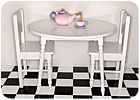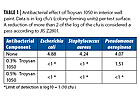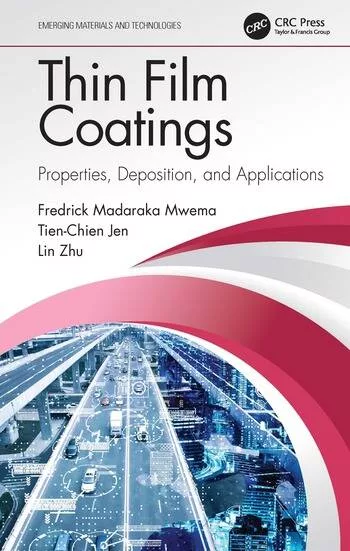Antibacterial Dry Film Protection for Interior Coatings
There is an increasing market interest in providing dry film antibacterial protection for niche interior market areas such as daycare centers, hospitals, food processing locations, elder care facilities, etc. It is into this market that Troy is introducing a product designed for dry film bacterial protection of coatings.

The need for antimicrobial products to protect water-based coatings against bacteria, yeast, fungus and algae is well established in the coatings industry. For exterior coatings, the market has responded with appropriate, cost-effective antimicrobials that dramatically expand the lifespan of the applied coating.
Recently, increased emphasis on the use of dry film fungicides for interior coatings has arisen, and the market has responded with appropriate and effective products. Now, there is an increasing market interest in providing dry film antibacterial protection for niche interior market areas such as daycare centers, hospitals, food processing locations, elder care facilities, etc. It is into this market that Troy is introducing Troysan® 1050, a product designed for dry film bacterial protection of coatings.
Why the recent emphasis on interior dry film protection? Traditionally, buildings were ventilated by natural air exchange. Today’s modern, energy-efficient buildings are more ‘airtight’, which often leads to increased humidity and moisture condensation. Collected moisture in conditioned interior living spaces leads rapidly to mold and fungal growth, which is unsightly, foul smelling and physically damaging. Interior mold growth in building materials is recognized as a major concern and is frequently identified as a contributor to the “sick building syndrome”. In mold-infested buildings, the most important fungi identified are species of the genera Aspergillus, Penicillium, Paecylomyces, Eurotium, Chaetomium and Stachybotrys. Since humidity condensation cannot be avoided in all cases, the application of film fungicides is growing in importance.
Due to high efficiency and favorable risk assessments, a concentration of 0.05 to 0.3% of non-VOC suspension concentrate formulations based on 3-iodpropinyl-N-butylcarbamate (IPBC) can be considered as an established technology for the prevention of mold growth on interior paints. An example of a commercially available formulation today is Polyphase 678.
A complimentary emerging market desire, originating from Japan, is the inclusion of antibacterial protection intended to provide dry surface protection to interior paints. This type of paint is marketed as providing an additional hurdle for bacteria to survive in interior environments, especially in elder care homes, hospitals and kindergartens. These coatings are viewed as contributing to a more hygienic environment. The typical test method for demonstrating the accelerated reduction of germ counts per unit area as a result of treatment is the Japanese Standard JIS Z2801, now developed as international ISO-standard ISO22196.<

Troysan 1050 has recently been approved by the U.S. EPA for use in preventing the growth of bacteria on protective coatings.
It is possible, therefore, to provide complete, broad-spectrum, dry film protection against bacteria, yeast and fungi with Troysan 1050 in combination with other products such as Polyphase 678. n
For more information, visit www.troycorp.com.

The need for antimicrobial products to protect water-based coatings against bacteria, yeast, fungus and algae is well established in the coatings industry. For exterior coatings, the market has responded with appropriate, cost-effective antimicrobials that dramatically expand the lifespan of the applied coating.
Recently, increased emphasis on the use of dry film fungicides for interior coatings has arisen, and the market has responded with appropriate and effective products. Now, there is an increasing market interest in providing dry film antibacterial protection for niche interior market areas such as daycare centers, hospitals, food processing locations, elder care facilities, etc. It is into this market that Troy is introducing Troysan® 1050, a product designed for dry film bacterial protection of coatings.
Why the recent emphasis on interior dry film protection? Traditionally, buildings were ventilated by natural air exchange. Today’s modern, energy-efficient buildings are more ‘airtight’, which often leads to increased humidity and moisture condensation. Collected moisture in conditioned interior living spaces leads rapidly to mold and fungal growth, which is unsightly, foul smelling and physically damaging. Interior mold growth in building materials is recognized as a major concern and is frequently identified as a contributor to the “sick building syndrome”. In mold-infested buildings, the most important fungi identified are species of the genera Aspergillus, Penicillium, Paecylomyces, Eurotium, Chaetomium and Stachybotrys. Since humidity condensation cannot be avoided in all cases, the application of film fungicides is growing in importance.
Due to high efficiency and favorable risk assessments, a concentration of 0.05 to 0.3% of non-VOC suspension concentrate formulations based on 3-iodpropinyl-N-butylcarbamate (IPBC) can be considered as an established technology for the prevention of mold growth on interior paints. An example of a commercially available formulation today is Polyphase 678.
A complimentary emerging market desire, originating from Japan, is the inclusion of antibacterial protection intended to provide dry surface protection to interior paints. This type of paint is marketed as providing an additional hurdle for bacteria to survive in interior environments, especially in elder care homes, hospitals and kindergartens. These coatings are viewed as contributing to a more hygienic environment. The typical test method for demonstrating the accelerated reduction of germ counts per unit area as a result of treatment is the Japanese Standard JIS Z2801, now developed as international ISO-standard ISO22196.<
Silver Ion
To provide this antibacterial component to interior paints, silver ions, generated from different formulated products, have been proposed, primarily as a default position since there are so few options available. Other molecules proposed for this effect are zinc pyrithione, or 2-(2’,4’-dichlorophenoxy)-5-chlorphenol. While silver ions can show efficacy at low concentration as measured by the JIS Z2801 test, a well-known issue with grayish discoloration is seen at effective use levels. Silver formulations in the market try to balance the necessary flux of ions to the surface with the issue of discoloration. An additional feature of silver is the high cost and price volatility of the active metal itself.
The Latest Development
Troy recently discovered how to convert the well-known antibacterial substance 1,2-benzisothiazolin-3-one into a slow-release form, which allows for its use in antibacterial paints. This product is named Troysan 1050. Research has shown interior paints containing this compound demonstrate efficacy against gram-positive and gram-negative bacteria, including Escherichia coli, Staphylococcus aureus and the difficult to control Pseudomonas aeruginosa (using the Japanese Standard test JIS Z2801 or an agar-diffusion type test like SNV195120). Table 1 indicates the excellent range of activity shown in an interior wall paint based on a styrene-acrylic binder.Troysan 1050 has recently been approved by the U.S. EPA for use in preventing the growth of bacteria on protective coatings.
It is possible, therefore, to provide complete, broad-spectrum, dry film protection against bacteria, yeast and fungi with Troysan 1050 in combination with other products such as Polyphase 678. n
For more information, visit www.troycorp.com.
Looking for a reprint of this article?
From high-res PDFs to custom plaques, order your copy today!





